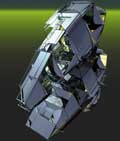


Hence, the fluid projected forms in Novak’s video art respond to the observer’s movement.

His immersive, three-dimensional creations are responsive to the viewer, transformable though user interaction. Marcos Novak describes himself as a “trans-architect,” due to his work with computer-generated architectural designs, conceived specifically for the virtual domain, that do not exist in the physical world. As Novak describes in an interview with “Floornature: Architecture & Surfaces,” his analytic conformations theorize the existence of “hypersurfaces, hybrids” and combining invisibility with virtuality. Tryptophan).Ī victor of “non-traditional” architecture, Novak’s inspiration is rooted in the study of spatial processes and potential, hence formatting his new media practices, which include maverick digital technologies and algorithmic aural compositions. Novak’s works are untitled, though some of the sculptures – skeletal and biomorphic – are framed by panels that denote biosynthetic processes (e.g. Novak’s video projections feature “amoeba-like” floating nebulae, formless and indeterminate as they flow and ebb across Reed Gallery’s walls. Novak’s mediums all frame ambient spaces: his canvasses display organic forms, including leaves and feathers, which are delicately pinned and tethered to blank services.

“On Ambient Demons” features an array of sculptures, installations, and Virtual Reality (VR) headsets. During his career as a researcher at Austin University in Texas, Novak began focusing on the relationship between information technology and construction in the early eighties, a practice he has supplemented in Reed Gallery’s “On Ambient Demons: Ringlets of Kronos”, on the campus of The University of Cincinnati. Truly a multifaceted artist whose new media processes and technologies wed organic forms with intermedia landscapes, artist Marcos Novak, born in 1957 in Caracas, Venezuela, eruditely explores architecture and industrial design in his installation artwork.


 0 kommentar(er)
0 kommentar(er)
